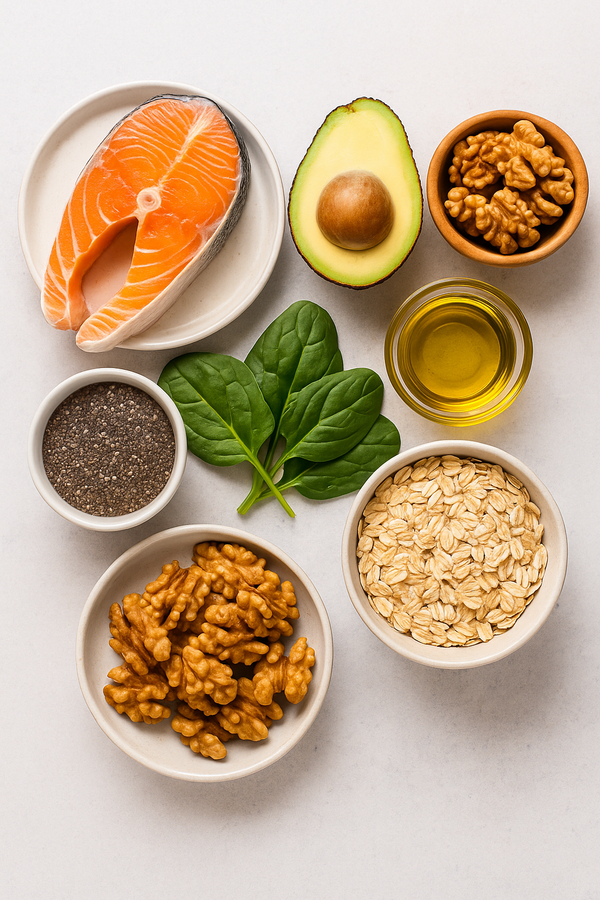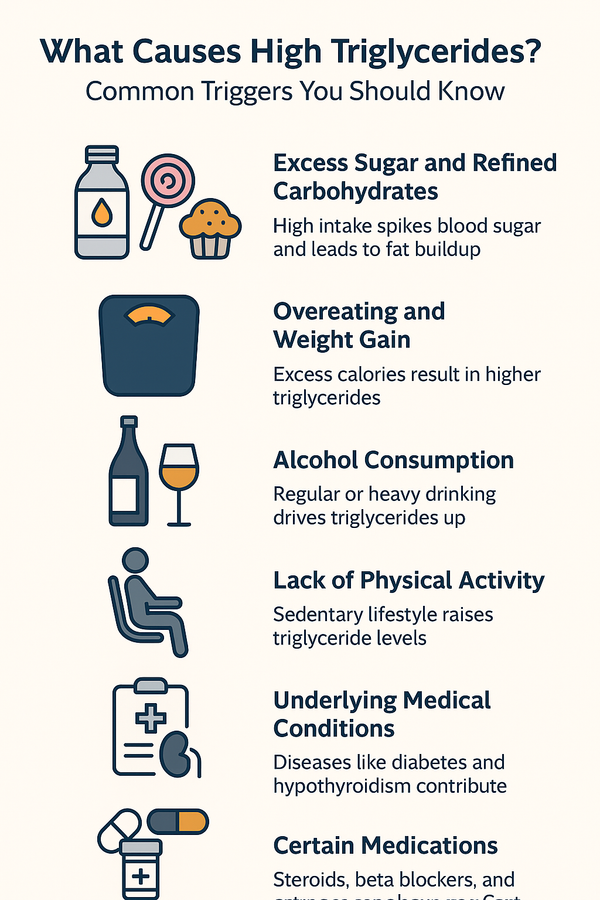How to Lower Triglycerides Naturally: 7 Research-Backed Strategies

Meta Description
Want to lower your triglycerides naturally? Discover 7 simple, science-backed ways to reduce your levels without medication and support heart health.
H1: How to Lower Triglycerides Naturally
High triglyceride levels are often silent but dangerous. They're strongly linked to heart disease, fatty liver, and metabolic syndrome. The good news? You can significantly lower your triglycerides naturally—no medication required. Here are seven evidence-based strategies to get started.
H2: 1. Cut Back on Refined Carbs and Sugars
Studies show that excessive sugar, especially fructose, spikes triglycerides. Reducing intake of sugary drinks, white bread, and desserts can have a rapid effect. Choose whole foods and fiber-rich carbohydrates instead.
🧠 Tip: Even fruit juices labeled "natural" can increase triglycerides—opt for whole fruits.
H2: 2. Focus on Healthy Fats, Not Low-Fat Labels
Ironically, cutting out all fat may raise triglycerides if you're replacing it with carbs. Add more omega-3 fatty acids like salmon, chia seeds, and walnuts to your diet.
🔗 Related article: [The Superfood That Helped Me Lose 3kg — Why You Should Add Chia Seeds to Your Morning Routine]
H2: 3. Lose Excess Weight—Even a Small Amount Helps
Losing just 5–10% of your body weight can reduce triglycerides by up to 20%. The effect is even greater with a combination of exercise and diet changes.
H2: 4. Exercise Regularly, Especially Cardio
Aerobic activities like brisk walking, swimming, or cycling can lower triglycerides and improve insulin sensitivity. Aim for at least 150 minutes per week.
H2: 5. Limit Alcohol—Even “Light” Drinking Raises Levels
Alcohol is metabolized into triglycerides by the liver. Just a few drinks per week can spike levels, especially in people with high baseline triglycerides.
H2: 6. Try Intermittent Fasting (IF)
IF may improve triglyceride levels by increasing fat metabolism. Popular protocols like 16:8 (16 hours fasting, 8 hours eating) are simple and sustainable.
H2: 7. Monitor Your Progress with Blood Tests
Check your fasting triglyceride levels at least once every 3–6 months. If you're not seeing progress, re-evaluate your carb intake and exercise habits.
Final Thoughts
Lowering triglycerides isn't about following a restrictive diet—it’s about making smarter, long-term choices. Start with small habits like switching to olive oil, walking after meals, or cutting out soda. Over time, these add up to big health gains.



